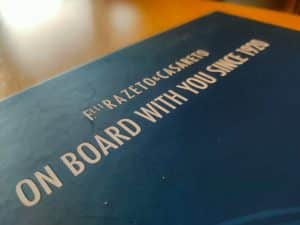The ‘Razeto & Casareto’ book is a unique work, where 100 years of company and family history are collected.
The ‘Razeto & Casareto’ book is a unique work, where 100 years of company and family history are collected.
A beautiful celebration for the Fratelli Razeto & Casareto company which, for its 100th anniversary, has published a company history monograph collecting the anecdotes and the intertwining of the families and the company. Since 1920, the F.lli Razeto & Casareto company has been producing complements and accessories for shipbuilding, first for Genoese shipyards and transatlantic liners, now for the whole range of recreational boats, for big brands and for modern cruise ships.
“The historical monograph is both a cultural and marketing product, which recounts through photographs, images and texts the company’s heritage, consisting of values, professionalism and human capital”.
‘On Board with you since 1920’, this is the title of the book, retraces the company’s steps backwards in a sort of cinematographic flashback, going through the great epochal changes that have taken place in Italy in one hundred years of history. Texts and images recompose the logical and chronological thread from today, to the company’s birth in 1920 in Sori, on the Eastern Ligurian Riviera. The first handles, locks and coat hooks for Genoese ships began to be produced in a small premises, and as time went by, the company increased both its workload and the expansion of the factory where all the brassware to be supplied to the various boats in the area and beyond was produced, expanding its borders abroad as early as the 1930s. Today, F.lli Razeto & Casareto is one of the leading companies in the marine accessories sector. Thanks to the quality and originality of its products, it has conquered all continents and has a 50% turnover with the foreign market.
In the book, the tale begins 
A history that has been handed down for three generations and that has found in the people at the helm the ability to renew themselves according to social and economic changes over time. This has led the company not to lose its value but, on the contrary, to acquire more and more, thanks to its roots, as the author herself states:
“The value of the company is also a value for the territory where the company resides. We have made a book that in communication jargon is called ‘heritage marketing’, that is precisely the marketing of heritage. It speaks of the new, not of a memory, of the present and the future through the story of the company’s historical roots”.










